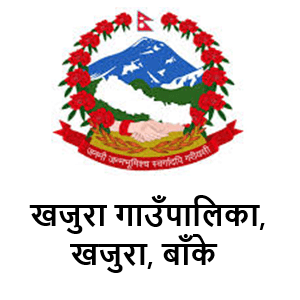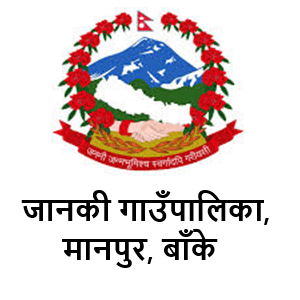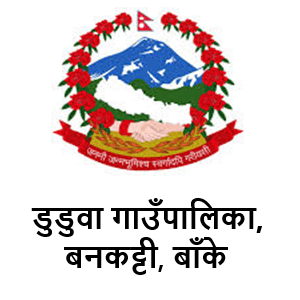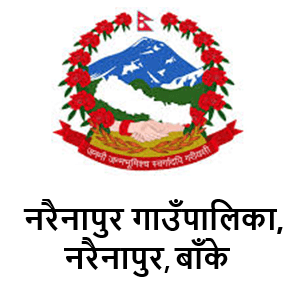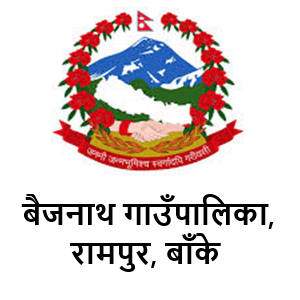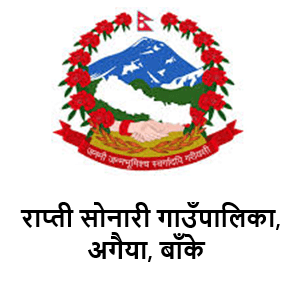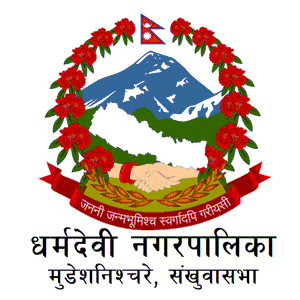Overview
Kohalpur Municipality (Kohalpur Nagarpalika) is situated in Banke District of Lumbini Province, within the new administrative structure of the Federal Democratic Republic of Nepal. Based on global coordinates, it lies between 28°07'12" to 28°18'54" North latitude and 81°38'24" to 81°49'51.6" East longitude. It is situated in the Mid-Western Terai region of Nepal and spans a total area of 184.26 square kilometers.
Rapti Sonari Rural Municipality borders Kohalpur to the east, Baijanath Rural Municipality to the west, the Chure hills of Salyan District to the north, and Janaki Rural Municipality and Nepalgunj Sub-Metropolitan City to the south. Located 10 kilometers north of Nepalgunj, the district headquarters of Banke, Kohalpur, previously belonged to the Bheri Zone in the Mid-Western Development Region.
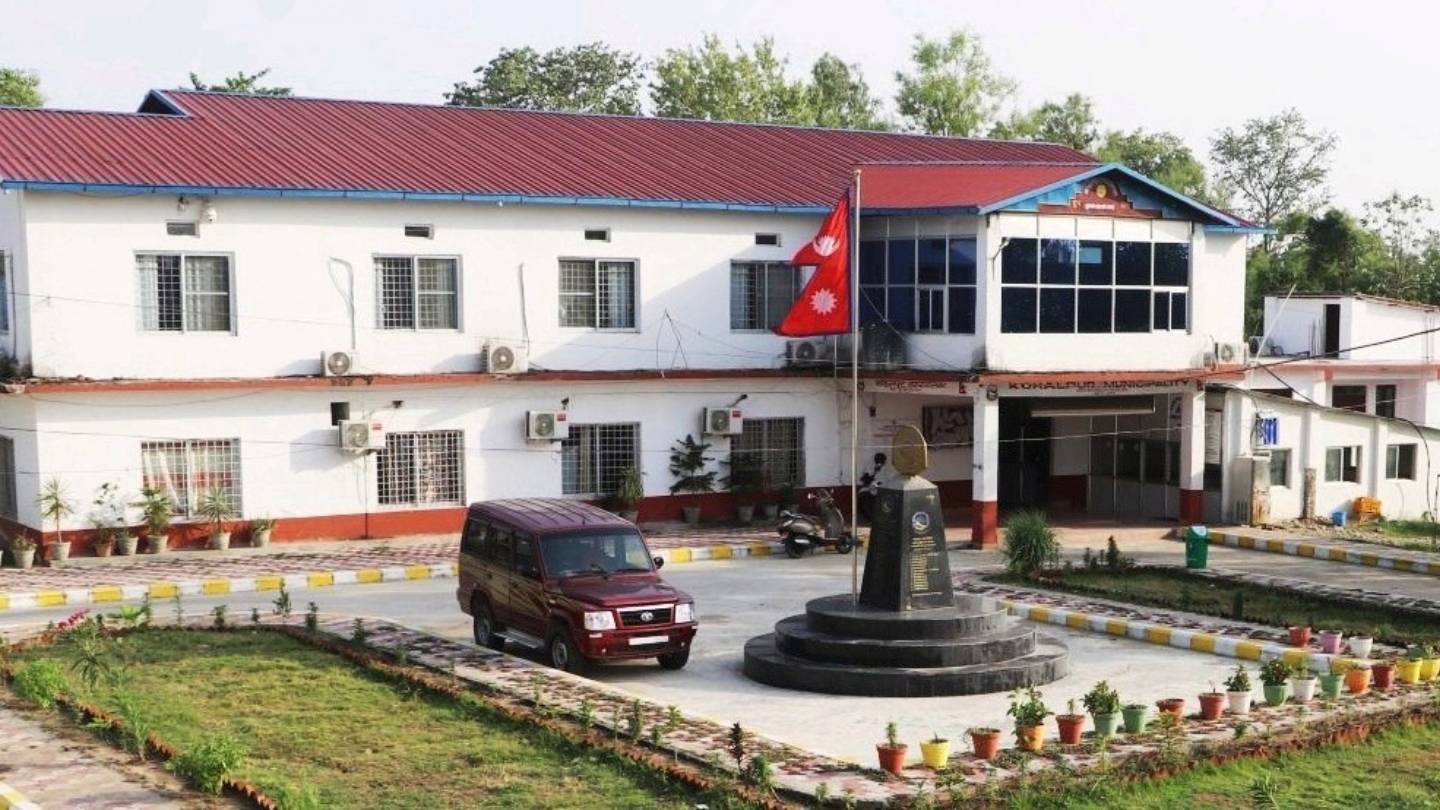
Origin of the Name Kohalpur
The name "Kohalpur" is believed to have originated from the traditional wooden oil-pressing device known as "Kol." This device was used to extract oil from seeds like mustard and flax in rural households.
Establishment of the Municipality
Kohalpur Municipality was officially formed by merging the former Kohalpur and Ranjhana Village Development Committees as per the decision of the Government of Nepal on 25th Baisakh 2071 B.S. The formal announcement came on 7th Jestha 2071 B.S. Later, in 2073 B.S., parts of the former Shamshergunj VDC were integrated into the municipality.
Administrative Division
Kohalpur Municipality falls within the Banke District of Lumbini Province. It is administratively divided into 15 wards. In terms of electoral division, it lies in Provincial Constituency No. 1 (B) and Federal Parliamentary Constituency No. 1.
Population and Ethnic Communities
According to the 2021 National Census (2078 B.S.), Kohalpur Municipality has a total of 24,183 households and a population of 101,667.
Based on caste and ethnicity:
-
Chhetri: 24.2%
-
Tharu: 20.2%
-
Hill Brahmin: 14.3%
-
Thakuri: 9.2%
-
Magar: 8.6%
-
Bishwakarma: 7.6%
-
Muslim: 2.8%
-
Pariyar: 2.3%
-
Yadav: 1.3%
-
Sanyasi/Dasanami: 1.3%
-
Newar: 1.1%
-
Terai Brahmin: 1%
-
Gurung: 0.8%
-
Khatik: 0.7%
-
Chamar/Harijan/Ram: 0.6%
-
Mijar: 0.6%
-
Gaderi/Bhediyar: 0.3%
-
Dhobi: 0.2%
-
Foreign nationals: 0.2%
-
Chidimar: 0.2%
-
Gaine: 0.2%
-
Badi: 0.2%
-
Sunuwar: 0.2%
-
Tamang: 0.2%
-
Sonar: 0.2%
-
Barai: 0.1%
-
Rajbanshi: 0.1%
-
Majhi: 0.1%
-
Kurmi: 0.1%
-
Lohar: 0.1%
-
Rai: 0.1%
-
Rajput: 0.1%
-
Kumal: 0.1%
-
Baniya: 0.1%
-
Others: 0.1%
Languages Spoken
As per the municipal profile, the distribution of first languages among Kohalpur’s population is:
-
Nepali: 44.9%
-
Maithili: 11%
-
Bhojpuri: 6.2%
-
Tharu: 5.9%
-
Tamang: 4.9%
-
Bajjika: 3.9%
-
Awadhi: 3%
-
Newar: 3%
-
Magar (Dhut): 2.8%
-
Combined share of Urdu, Newar, Khas, Maithili, Gurung, Bhojpuri, Magar (Kham), Tamang, Jumli, Sanskrit, Muslim, Rai, Bajjika, Doteli, and others: 18.3%

Climate
Kohalpur lies in a subtropical climatic zone. During summer, the maximum temperature can reach up to 46°C, while in winter, it can drop to 4°C. The area receives an average annual rainfall of 1,912 mm, with an average relative humidity of 71.4%.
Transportation
Kohalpur is connected by paved roads to Nepalgunj, Karnali Province, Kanchanpur-Gaddachauki in the far west, and Butwal, Narayanghat, and Kathmandu in the east. Major distances from Kohalpur:
-
Surkhet: 85 km
-
Mahendranagar: 200 km
-
Kathmandu: 535 km
Kohalpur is a significant highway junction where the East-West Mahendra Highway and Ratna Highway (linking Nepalgunj and Karnali Province) intersect. Due to this, Kohalpur serves as a major gateway for transportation to the far-western and Karnali regions. Roads within the municipality allow year-round motor vehicle access. The Nepalgunj Airport is located 13 kilometers from Kohalpur, offering flights to Kathmandu, Karnali, and hilly districts of the far-west.
Helipads are also available for transporting patients from remote hilly districts and for emergency rescues.
Rivers and Wetlands
Approximately 60 kilometers of waterways flow through Kohalpur Municipality. These include:
-
Dudhuwa Khola
-
Kiran Nala
-
Sano Dudhuwa Nala
-
Ita Nala
-
Rohini Khola
-
Ranighat Khola
The municipality also features water bodies such as:
-
Bhutaiya Lake
-
Jorte Tappar
-
Jorte Wetland Area
-
Jorte Lake
Religious Sites
Kohalpur is a city of religious diversity and harmony. Major Hindu temples include:
-
Kalika Temple
-
Shiva Temple
-
Manakamana Temple
-
Shivalaya
-
Radhakrishna Temple
-
Vaishnodevi Temple
-
Jagannath Kiran Bhawani
-
Ram Janaki Temple
-
Ranighat Temple
Christian religious centers include:
-
Believers Church
-
Bethel Church
-
Geshemi Church
Muslim religious sites:
-
Jamiya Mosque
-
Jamiya Qadri Mosque
There is also a Buddhist stupa representing followers of Buddhism.
Sports Grounds
Kohalpur is home to spacious sports fields. Major facilities include the international cricket ground, the wide-scale Tera Bigha football ground, and Shahid Manch located in the town center. Additionally, several secondary schools in the area have large playgrounds that support sports and physical activities.
Available Government Services and Facilities
Kohalpur Municipality is rapidly developing as a modern city with comprehensive public services. It hosts the Office of the Municipal Executive, its branch offices, and ward offices. Key federal and provincial government offices are present here, including:
-
Area Administration Office
-
Tourism Office
-
Area Police Office
-
Regional Traffic Police Office
-
Armed Police Force Battalion
-
Nepali Army’s Mid-Western Division Training Center
-
Higher Secondary Education Council
-
Internal Revenue Investigation Office
-
Banke National Park
-
Health Posts and Ayurvedic Dispensary
The regional building of Nepal Rastra Bank is currently under construction.
Federal and Provincial Government Offices
Key federal government offices in Kohalpur include:
-
Area Administration Office
-
Area Police Office
-
National Examination Board
-
Council for Technical Education and Vocational Training (CTEVT) Regional Office
-
Banke National Park
The Regional Tourism Board operates under the provincial government.
Government Institutions
Several significant government institutions operate in Kohalpur, including:
-
Nepal Electricity Authority
-
Nepal Telecom
-
Nepal Television Regional Broadcast Service
-
Gorkhapatra Corporation Regional Office
-
Rastriya Banijya Bank
-
Nepal Bank Limited
-
Agricultural Development Bank
Drinking Water Supply
Kohalpur Small Town Drinking Water Project and Birat Drinking Water Project are the main municipal water supply projects. These projects extract groundwater and distribute drinking water through pipelines to households across the municipality.
Health Services
The municipality includes:
-
One medical college
-
Three health posts
-
Three private hospitals
-
One Ayurvedic dispensary
Recently, a 15-bed COVID hospital was established and is currently operational under the municipality.
Electricity and Communication Services
Electricity is supplied to both urban and rural areas of nearly all wards through the central grid of the Nepal Electricity Authority.
Communication services include:
-
Nepal Telecom’s landline, prepaid, and postpaid mobile services
-
ADSL internet services in major market areas
-
Mobile and data services via Ncell
-
Optical fiber internet provided by private companies to homes and offices
The western edition of Nepal’s official national daily, Gorkhapatra, is printed in Kohalpur. Other national dailies such as Kantipur, Nagarik News, Purbanchal Today, Samacharpati Dainik, and Naya Patrika are also available daily. Locally published dailies include Mission Today and Yugayan Dainik.
Radio Broadcast Services
Kohalpur receives both central and regional broadcasts from Radio Nepal:
-
Medium Wave (576 kHz from Surkhet)
-
FM broadcast (100 MHz from Chamere Danda)
In addition, local FM stations such as:
-
Kohalpur FM (101.2 MHz)
-
Pratibodh FM (102.4 MHz)
-
Radio Mission (103.5 MHz)
These stations broadcast national, local, and international news, entertainment, interviews, live coverage of local events, educational content, public awareness programs, and business advertisements. The broadcasts are also accessible online through the respective radio websites and social media channels.
Television Broadcast Services
Nepal Television’s regional broadcast center is located in Kohalpur. It transmits both central programs and visual content via a dedicated local channel, Kohalpur TV. These broadcasts can be accessed through the internet, local cable TV services, and satellite dishes.
Community Groups and Networks
Kohalpur Municipality supports a wide range of organized and informal community groups including:
-
Community-based early grade learning groups
-
Targeted group networks
-
Child networks and child clubs
-
Community forest user groups
-
Local youth clubs
-
Mothers’ groups
-
Savings and self-reliance groups
-
Dads' groups (e.g., Dari Gang)
These organizations are actively engaged in social service and development initiatives. Additionally, various NGOs operate within the municipality, working on themes such as good governance, local administration, social harmony, development, and public awareness.
Youth and Sports Engagement
There are 10 active youth clubs within the municipality, comprising 777 registered youths. Moreover, 28 child clubs operate in the area with 527 child members—of which 58% are girls.
Sports infrastructure includes:
-
A cricket ground in Ward No. 11
-
A sports field in Ward No. 13 (Ranighat)
-
Seven designated locations across the municipality for sports and recreational activities
Information, Communication, and Technology (ICT)
In Kohalpur Municipality, there are:
-
2,656 landline telephone connections
-
799 ADSL connections
-
1,665 GSS postpaid mobile connections
-
51,490 GSS prepaid mobile connections
-
6,824 Sky prepaid mobile connections
Among all households:
-
83% have access to television
-
31% have computers
-
13% have internet connectivity
Internet service is available in all 15 ward offices. Among health institutions, only three—Ranjhana, Kohalpur, and Shamshergunj—are connected to the internet. Six secondary schools in the municipality also provide internet facilities.
The Municipal Executive Office operates digital systems for:
-
Registration and dispatch
-
Business registration
-
Revenue
-
Accounting
-
Inventory management
-
Human resource system (EHIMS and EMIS)
-
Institution registration
The municipality maintains an interactive official website and a mobile application, through which regular updates and public notices are disseminated.
COVID-19 and Disaster Management
Kohalpur Municipality is exposed to multiple disaster risks, including storms, fires, floods, road accidents, earthquakes, and snake bites. However, the most impactful in recent times has been the global COVID-19 pandemic.
To address these, a Municipal-Level Disaster Management Committee has been formed. A Local Emergency Operations Center is also operational.
Early warning systems have been installed in vulnerable areas for flood and lightning alerts. A disaster response plan has been developed in coordination with the Nepal Red Cross Society.
In every ward, Red Cross personnel and volunteers are mobilized. A dedicated COVID hospital has been constructed to manage the pandemic response. Coordination with the Red Cross has also ensured the setup of quarantine and isolation wards. For climate-related disasters, a seasonal calendar has been prepared and made public.
Potential for Future Development
Strategic hub for geography, residence, commerce, and education:
Kohalpur holds strategic importance in Western Nepal as a junction for residential, commercial, and educational development. It borders Banke National Park—an ecologically significant region—and lies near the internationally recognized Bardiya National Park.
Located at the entry point of Lumbini and Karnali Provinces, Kohalpur has strong potential to become a model residential and commercial center for the province and the nation. Based on these features, the municipality aims to evolve into a model city with integrated geographic, residential, business, and educational strengths.
Challenges and Issues
Despite being declared fully literate, Kohalpur faces significant challenges in delivering quality, career-oriented, and life-skills-based education through community schools.
Key issues include:
-
Lack of proportional distribution of community schools based on population density
-
Poor student–teacher ratios in many schools
-
Inadequate staffing aligned with student numbers
-
Limited technical and vocational training—only two schools offer such programs
-
Absence of girl-friendly toilets, sanitary pad facilities, and inclusive infrastructure for children and persons with disabilities
-
Rising dropout rates
-
Lack of play and recreation infrastructure in early childhood development centers
-
No community learning centers have been established at the ward level
Additionally:
-
Many parents show limited concern about their children’s educational progress, resulting in a negative attitude toward education and a lack of student discipline
-
Weak coordination between the school management committees and teachers
-
Administrative mismatches between principals and teaching staff hinder school environments
-
Lack of teacher regularity, science labs, computer access, educational technology, and libraries
-
No academic museums and irregular extracurricular activities, all of which hamper quality education
Further, the current education system remains literacy-focused. The absence of a curriculum aligned with market demands and practical, employment-oriented education systems has led to increased student dropout rates.
History of School Establishment
The first school established in Kohalpur Municipality is the current Tribhuvan Secondary School. Founded in 2016 B.S. under the leadership of education advocate Hariprasad Rawat, it initially operated as Nepal National Primary School in a thatched hut on an open ground in Chatar village.
Although the National Education System Plan began in 2028 B.S., it was implemented in Banke starting from 2029 B.S. The school was relocated in 2032 B.S. to its present location on Nepalgunj Road, Ward No. 11 of Kohalpur. It became a lower secondary school in 2034 B.S. and a secondary school the same year.
Similarly, Laxmi Secondary School was established in 2016 B.S. under the name Nepal National Primary School, beneath a pipal tree in Bardawa, Ward No. 4 of the former Ranjhana Gaun Panchayat. Its founding chairperson was Chotelal Tharu. It became a lower secondary school in 2056 B.S. and a secondary school in 2063 B.S.
Subsequent school establishment timeline:
-
Janata Secondary School, Maitahawa – 2018 B.S.
-
Ram Secondary School – 2028 B.S.
-
Saraswati Secondary School – 2029 B.S.
-
Khadgabar School – 2037 B.S.
-
Nepal National Schools (2) – 2040 B.S.
During the 2040–2050 and 2051–2060 decades, 18 schools were established—the most productive periods in the municipality's educational development.
In total, over 59 years, 30 community schools and 1 Guthi school were established:
-
12 became secondary schools (2016–2061 B.S.)
-
6 remained as lower secondary schools (2040–2058 B.S.)
-
12 remained at the primary level for over 20 years (2044–2064 B.S.)
Despite this timeline, community schools in Kohalpur still require significant development to meet expectations.
Community Schools
There are 30 community schools in Kohalpur Municipality, including 81 Early Childhood Development Centers (ECDs) within 28 schools. These include:
-
5 schools teaching grades 1–12
-
6 secondary schools teaching grades 1–10
-
7 basic schools (grades 1–8)
-
12 primary schools (grades 1–5)
In total, 15,178 students study from ECD to grade 12. The workforce includes:
-
376 teachers (permanent, temporary, relief, and municipal grant-based)
-
11 account staff
-
28 administrative support staff
Operational Days and Teacher Attendance
During the academic year 2076 B.S., school operational data shows:
-
Maximum school days: 255
-
Minimum school days: 213
-
Average: 224 days
On school days, teaching was conducted:
-
Maximum: 99% of days
-
Minimum: 82%
-
Average: 89%
Mandatory subject teachers were present:
-
Maximum: 226 days
-
Minimum: 183 days
-
Average: 205 days
Open School Program
Open schools are for individuals who previously left school and now wish to resume education while continuing with daily occupations. Through this flexible, cost-effective, alternative system, learners can prepare for Grade 8 and SEE exams from home.
Currently, Nepal has 84 open schools, and the National Education Policy 2075 includes plans to expand such opportunities.
In Kohalpur, Tribhuvan Secondary School runs an open education program, with:
-
Lower Secondary: 5 students (2 male, 3 female)
-
Secondary: 48 students (28 male, 20 female)
Nepal also established an Open University in 2073 B.S.
Literacy Status
Kohalpur was declared a Literate Municipality on Jestha 31, 2076 B.S.. Out of a population of 90,956, there were 5,606 illiterate people aged 15–60. Among them, 2,737 gained functional literacy (above 50% competency), raising the literacy rate to 96.85%.
As per the declaration policy, any municipality with over 95% literacy in the 15–60 age group qualifies as literate.
Literacy rates by ward:
-
Ward 1: 99.24%
-
Ward 2: 98.97%
-
Ward 3: 96.96%
-
Ward 4: 92.97%
-
Ward 5: 97.68%
-
Ward 6: 99.40%
-
Ward 7: 96.23%
-
Ward 8: 94.30%
-
Ward 9: 98.70%
-
Ward 10: 96.48%
-
Ward 11: 96.22%
-
Ward 12: 96.93%
-
Ward 13: 96.00%
-
Ward 14: 91.00%
-
Ward 15: 99.61%
Programs are being planned to raise literacy rates in the remaining wards and across all age groups.
Public Guthi-Run Institutional School
Kohalpur Secondary School (Grades 1–10) is operated as a community Guthi school. In 2077 B.S., Nepal APF School was established in Ward No. 2 on the former Armed Police Force barracks site. It is run under Nepal’s Armed Police Force as a Guthi institution.
Private Sector Institutional Schools
Kohalpur has 55 private schools:
-
9 pre-primary (playgroup/Montessori)
-
8 teaching up to grade 1
-
Others up to grade 12
Breakdown by grade:
-
52 schools offer Nursery and KG
-
5 schools up to grade 2
-
3 up to grade 3
-
14 up to grade 5
-
1 up to grade 7
-
3 up to grade 8
-
24 up to grade 10
-
7 up to grade 12
Current student numbers:
-
Pre-primary: 6,930
-
Grades 1–5: 8,819
-
Grades 6–8: 3,192
-
Grades 9–10: 1,528
-
Grades 11–12: 1,493
-
Total: 21,962 students
Higher Education (University Level)
Bageshwari Multiple Campus is the only constituent campus of Mid-Western University in Kohalpur. It offers education from Grade 11 to the Master's level and currently enrolls 1,350 students.
Private Higher Education
Private higher education institutions affiliated with Kathmandu University include:
-
Nepalgunj Medical College, Kohalpur (MBBS to PG level)
-
Nepalgunj Medical College Nursing College
-
Lord Buddha Nursing College
Other private multi-disciplinary colleges:
-
Kohalpur Model College
-
New Bageshwari Academy College
-
Dynamic College
These institutions offer +2 to postgraduate programs in education, management, and other faculties, enrolling 1,500+ students. Students come from various parts of Nepal and abroad (India, Bangladesh, Bhutan) to study medicine here.
Technical and Vocational Education
-
Laxmi Secondary School offers an agriculture stream with 158 students
-
Gorkha United English Medium School runs a bachelor's program in Forestry
-
Tribhuvan Secondary School and Gyanjyoti Secondary School offer 18-month and 3-year programs under CTEVT
These programs cover vocational skills and technical education to meet employment demands.
Community Learning Center
Kohalpur Municipality operates one Community Learning Center (CLC) to promote literacy, continuing education, non-formal learning, and basic skill development related to community awareness and income generation.
Student Record Center
A Student Record Center functions under the Education, Youth, and Sports Section of the municipality. It maintains data on students with physical and intellectual disabilities enrolled in both community and institutional schools. The center also offers technical consultation on education, scholarship access, and services provided by government and non-government bodies.
Non-School Educational Institutions
Kohalpur has emerged as an academic hub for students from surrounding rural and hilly districts, including those preparing for civil service and other competitive exams. This has led to the growth of:
-
Coaching and preparation centers for school and campus-level exams
-
Computer training centers
-
Driving schools
-
Tailoring and cutting courses
-
Fine arts, music, and dance classes
-
Public speaking and radio hosting workshops
-
Institutions offering non-formal education
Library
The Gyanodaya Library, established in 2058 B.S., is the only public library in Kohalpur. It serves 70–80 daily users—including students, children, and intellectuals—offering:
-
Free internet and Wi-Fi
-
Computer access and educational games
-
Newspapers, reference materials, and textbooks
The library also conducts:
-
Mobile library services in the community
-
Adolescent network formation at the ward level
-
Awareness campaigns against social evils and human trafficking
-
Student-focused events like quizzes and speech competitions
Library facilities include:
-
Child development room
-
Computer lab
-
Technical and women's sections
-
Music room
-
Main library hall
-
Over 12,000 books
-
8 desktop computers
-
1 reading room
-
1 auditorium
The library also supports farmer groups by offering technical knowledge on agriculture, livestock, climate change, and disaster management. It houses the Municipal Information Center of Kohalpur.
Kohalpur Regional Institutional Schools Association (KRISA)
Established in 2065 B.S., KRISA is a local network of institutional schools in Kohalpur. It collaborates with national organizations like PABSON and NPABSON at the municipal level.
KRISA works closely with the municipality for:
-
Educational reforms
-
Physical and academic strengthening of private schools
-
All-round student development
Its activities include:
-
KRISA Running Shield sports competition
-
Oratory and quiz contests
-
Regular academic calendar programming
-
Coordination in social services and municipal initiatives
Proposed Teacher Center
The municipality plans to convert the former resource center building within Tribhuvan Secondary School into a Teacher Center. It will serve as a professional development hub and umbrella organization for subject-based teacher learning centers across the municipality. A draft operational framework is being developed.
Subject-Based Teacher Learning Centers
Five Subject-Based Teacher Learning Centers have been designated in five secondary schools to enhance teachers' professional skills. Each center is led by the principal and includes:
-
Planning of peer discussions
-
Troubleshooting in subject teaching
-
Micro-trainings and best practice exchanges
Each center has completed its first planning meetings. One expert teacher each from the basic and secondary levels has been selected per center. Operational guidelines will soon be submitted for municipal approval.
Nepali Women’s Cricket
Kohalpur is the birthplace of women’s cricket in Nepal. The first girls' cricket match was held on Fagun 15, 2061 B.S. at the proposed international cricket ground. Organized by Regional Cricket Development Committee (Region No. 5) and Plan Nepal, the event featured:
-
Participation from 29 schools
-
435 female students
This laid the foundation for Nepal’s participation in the 2007 ACC Women’s Championship in Malaysia, where Nepal finished as runner-up. Notably, 7 players in the national team were from Banke, including 3 from Kohalpur. Mamta Thapa Magar served as the vice-captain.
In FY 2074/075, Kohalpur Municipality organized the first-ever Deputy Mayor Cup Inter-School Girls’ Cricket Tournament. With 154 students from 11 schools, Gyanjyoti Secondary School won the event, while Tribhuvan Secondary School was runner-up.
Since then, Kohalpur has allocated annual budgets for this tournament, aiming to establish the city as the cradle of women’s cricket. Former national captain Lekh Bahadur Kshetri is widely recognized as the "father of Nepali women's cricket" for his contributions.
Montessori Association Banke
The Montessori Association Banke was officially established in 2075 B.S. as a network of private pre-primary schools. Based in Kohalpur, its objectives include:
-
Promoting effective Montessori education in playgroups, nurseries, and UKG/LKG
-
Training female teachers in Montessori methods
-
Encouraging personality development in early childhood
-
Demonstrating and promoting Montessori learning materials
-
Educating parents on early childhood engagement
This teaching approach emphasizes sensory-based learning—hearing, touching, seeing, tasting, and smelling—based on the philosophy of Dr. Maria Montessori (1870–1952) of Italy.
Montessori education began in Nepal around 2001 A.D., with the first school in Banke established in 2067 B.S.


